Politics
LACMA Sold LA on Its Shrunken Zumthor Building by Promising to Add Satellites Around the City. Now That May Create Even More Problems
LACMA's building plan has become a lighting rod for the debate over what a 21st-century museum should be.
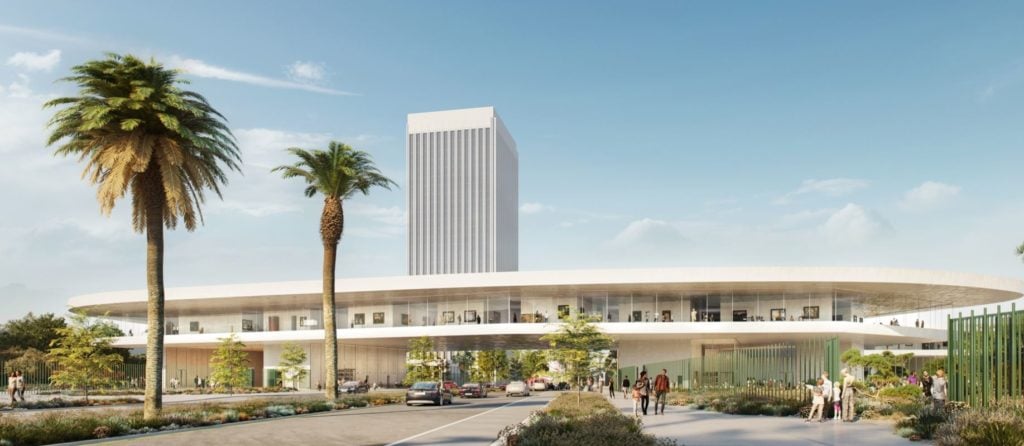
LACMA's building plan has become a lighting rod for the debate over what a 21st-century museum should be.

Catherine Wagley

When the Los Angeles Board of Supervisors voted unanimously two weeks ago to approve funding for the Los Angeles County Museum of Art’s new building—initially an ambitious black floating flower by Swiss starchitect Peter Zumthor that now resembles, after years of tweaks, a tasteful beige space station—it almost seemed like they were approving something else entirely.
The museum’s plans for satellite locations, spread across the city, came up frequently. Board chair Janice Hahn said she wanted to “encourage us as we move forward to invest in satellites of the art museum everywhere.” Sculptor Thomas Houseago praised LACMA director Michael Govan: “His idea of satellites is so radical and brilliant.” Artist Ian White, son of the artist Charles White, called the satellite plans the kind of “out-of-the-box thinking that an institution as vital as LACMA needs.”
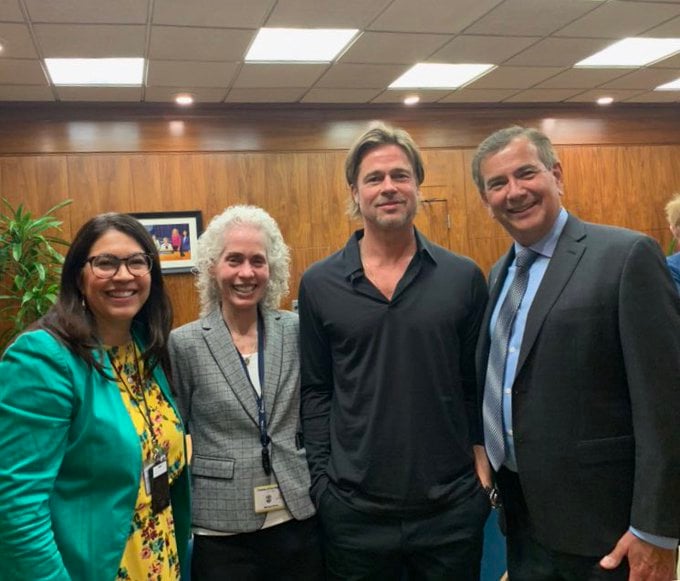
John Wicker, Deputy Chief Norma Edith Garcia, and DPH Director Barbara Ferrer with Brad Pitt at the Board Meeting.
It was easy to forget that, in fact, the undertaking in need of funding was a $650 million structure on LACMA’s main, mid-Wilshire campus, a building nearly five times as costly but only twice as big as the also-expensive, four-year-old Broad museum in downtown Los Angeles. Certain dissenters brought this up. “The ideas of regional satellites, while commendable, is not what is being voted on today,” artist Oscar Peña said. “This is an act of misdirection.”
The debate over LACMA’s new direction has been so heated because it gets at the heart of a very big question: What is a museum’s responsibility to its public? Is it to preserve and present historic objects and foster scholarship? Is it to serve its community, both through programming and transparency about money and decision-making? Is it to reconsider the hierarchies of art history? Is it even possible to do all of this in equal measure?
LACMA hopes to answer these questions in its next phase. But not everyone is confident it can.
Early on, after Zumthor unveiled his initial design in 2012, conversation focused on the architect’s “energetic rethinking of the encyclopedic museum,” in the words of former LA Times critic Christopher Hawthorne. There was a radical lack of hierarchy built into the design: as LACMA director Govan points out often, all galleries will be on a single floor, raised up from the ground on stilts (currently, many collections, especially non-Western ones, are tucked in hard-to-find corners).
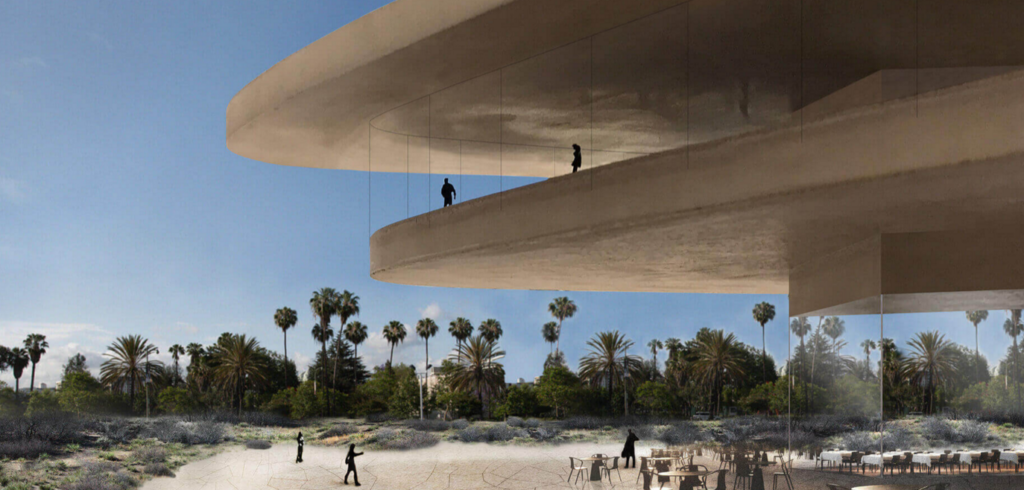
Rendering. Atelier Peter Zumthor & Partner / The Boundary. Courtesy Building LACMA.
Satellites became a prominent part of the public discourse approximately two years ago, when the museum announced plans to open an exhibition and storage location in South Central Los Angeles. It became more explicit in July 2017, when Govan announced at an American Institute for Architects brunch that LACMA was “hitting the limit for space on Wilshire Boulevard”—the new building will replace but not increase gallery space on the campus—and that there had “never been a building that’s been added onto that has been made better.”
He preferred, he explained, to expand elsewhere in the county to make the collection accessible to a broad population. So the museum would open up to five satellites, possibly in the San Fernando Valley in addition to South Central and East Los Angeles. With that, the conversation about LACMA’s buildings became inextricably linked to this notion of a decentralized museum.
Critics worry that this coupling could ultimately do a disservice both to the main campus and these projected satellites. Architecture critic Joseph Giovannini, who has written numerous articles decrying Zumthor’s use of space and the design’s cost, appreciates the vision for decentralization but argues that it “should be uncoupled from the fact that the Zumthor project is exhausting LACMA’s available land. Leveraging underserved, often minority communities to justify support for the new building is opportunistic and cynical.”
Govan, for his part, describes the satellite idea as neither opportunistic nor new. “I’ve improved the language and the understanding of it as we’ve developed the larger vision,” he told artnet News, emphasizing that “the two ideas—the sort of non-hierarchical view of art history [that the Zumthor design takes] and thinking about how we have a more inclusive and complex art history and how we share our collections through satellites—were there on my mind” since the start. “But it takes a long time to evolve ideas practically, and a lot of money, and you have to create consensus and you have to do all the work.”
Govan calls LACMA’s first satellite at Charles White Elementary—which opened in 2007, a year after he became the museum’s director—the “proof of concept.” But the initiative also reveals the challenges of the satellite plan.
More than a decade ago, LACMA began holding occasional exhibitions and workshops at the school with artists including Shinique Smith and Kaz Oshiro. Because it is located on the former campus of Otis College of Art and Design, it already had a gallery. But the necessary renovations that enabled the gallery to display art from the museum’s collections were not completed until January 2018. Only then did it begin offering public hours on weekends.
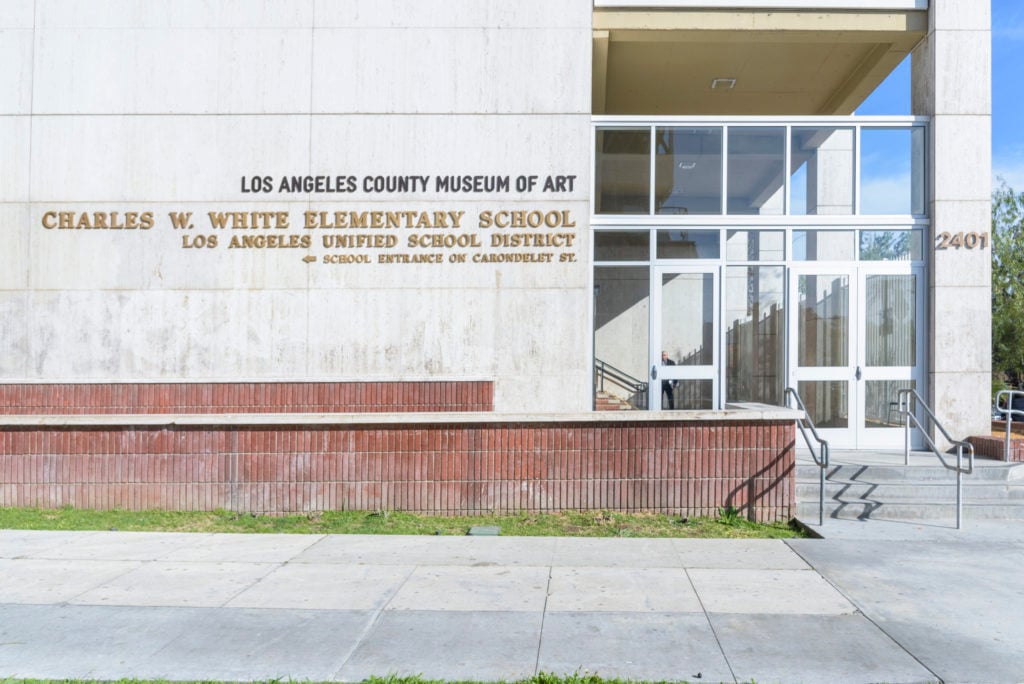
The entrance to LACMA’s gallery at Charles White Elementary. Photo © Museum Associates/LACMA
“Our partnership with Charles White has deepened over the years,” said Veronica Alvarez, LACMA’s director of school and teacher programs. Alvarez helped the elementary school successfully apply to become an arts magnet school two years ago. This gives them the freedom to design their curriculum around the arts and to enroll students outside their jurisdiction who want to study art.
But Principal Alfredo Juarez, who came to the school in 2017, does not anticipate a spike in applications in the immediate future, as Charles White is, and has been, an underperforming school. “We don’t have the performance numbers to attract anyone right now,” he told artnet News. For the time being, he is working with his own teachers and LACMA educators to develop a strategy for incorporating the exhibitions into the curriculum. “The challenge is either we force fit the exhibit to our own curriculum or we redefine the entire curriculum,” he said.

Installation photograph, Life Model: Charles White and His Students, Charles White Elementary School, organized by the Los Angeles County Museum of Art, on view until September 2019. Photo © Museum Associates/LACMA
Recently, LACMA staff held a community meeting with teachers and parents to determine the next show. The group chose an exhibition of work by Mexican artist Rufino Tamayo. This collective approach is one that both Alvarez and Juarez hope to continue, though the whole undertaking remains a work in progress. “I just wish that I could tell you exactly the direction that we’re following,” Juarez said. “I just know that we are creating these scaffolds so that our students, who are traditionally failing school, can find better ways to make sense of learning.”
Since 2017, LACMA has also shared its collection with the Vincent Price Art Museum (VPAM) at East Los Angeles College—the largest community college in the county, located in the diverse suburb of Monterey Park. VPAM hosted an exhibition of Chinese ceramics from LACMA’s collection followed by an exhibition of Egyptian art and photography by the late Mexican artist Mariana Yampolsky, with other collaborations in the works. Pilar Tompkins Rivas, formerly LACMA’s coordinator of cultural initiatives and now VPAM’s director, spoke in favor of the Zumthor plans and the satellites at the recent Board of Supervisors meeting.
“I think of it as all intertwined,” she told artnet News. “It’s really part of this whole holistic look at what a 21st-century model can be for an institution. People had a lot to say, certainly… but in my mind this is about thinking about who the museum-going public will be in the generations to come.”
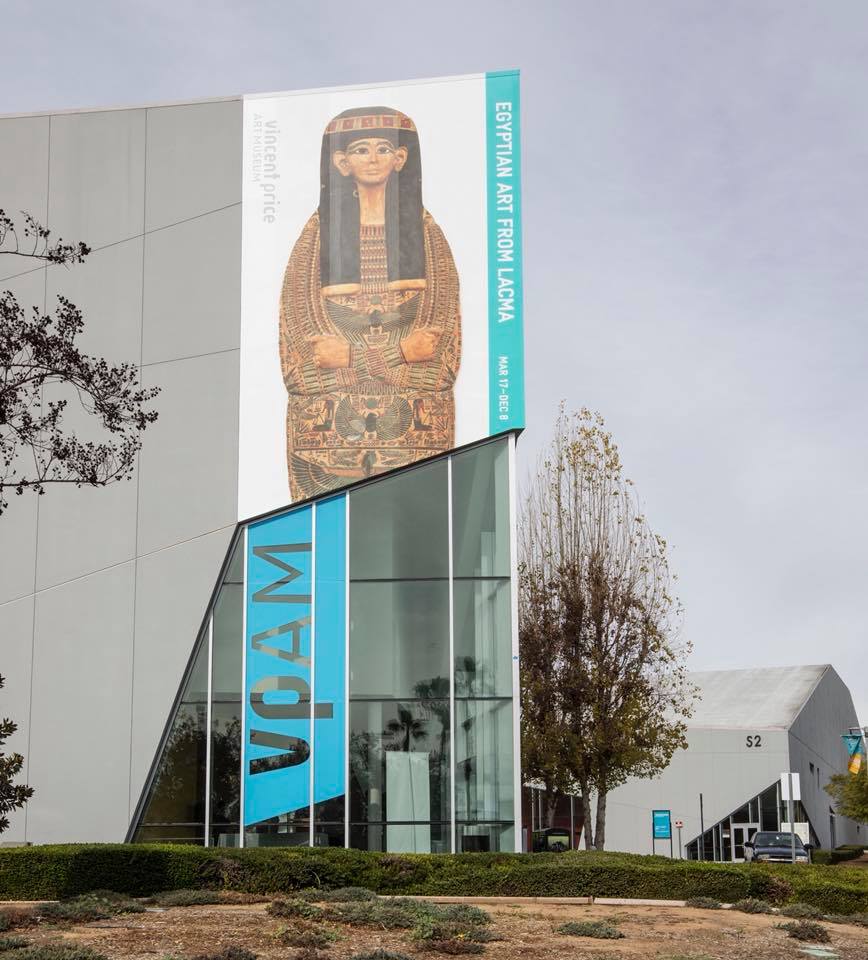
Exterior of the Vincent Price Art Museum, showing works on loan from LACMA. Courtesy of the Vincent Price Art Museum.
LACMA is also considering future programing at the Lancaster Museum in the arid Antelope Valley, north of Los Angeles. “So the rule is,” Govan explained, “if we can work with a museum or a library, then it’s silly to build our own infrastructure. It’s much less expensive and more efficient to work to upgrade those facilities so that they can have loans from LACMA.”
But the museum has not found a suitable partner in South Los Angeles, where it initially planned to open a satellite out of a former Metro garage at the South LA Wetlands Park. The city council granted the museum a 35-year lease on the building in January 2018, and, according to its terms, LACMA would have to have nearly completed restoration of the first 10,000 square feet by now. Instead, seismic concerns and other construction considerations have slowed progress.
The museum will be entering an area where new developments have already encouraged rent hikes and displacement. “You used to have an inner city that had been largely abandoned by affluent people, and the social structure was held by lower-income communities of color who built vibrant communities,” Cynthia Strathmann, executive director of South Los Angeles non-profit SAJE, told ARTnews last year. Any organization “without various displacement-prevention plans,” she added, will likely “create gentrification pressures.”
Artist and activist Will Flo, who co-founded the network South Central Arts in late 2016, worries that “these big museums are not connected to the grassroots,” and that this disconnection from the local artists and activists who have long nurtured culture in certain neighborhoods inevitably leads to detrimental change. “People with wealth, they do not try to adapt,” Flo observed.
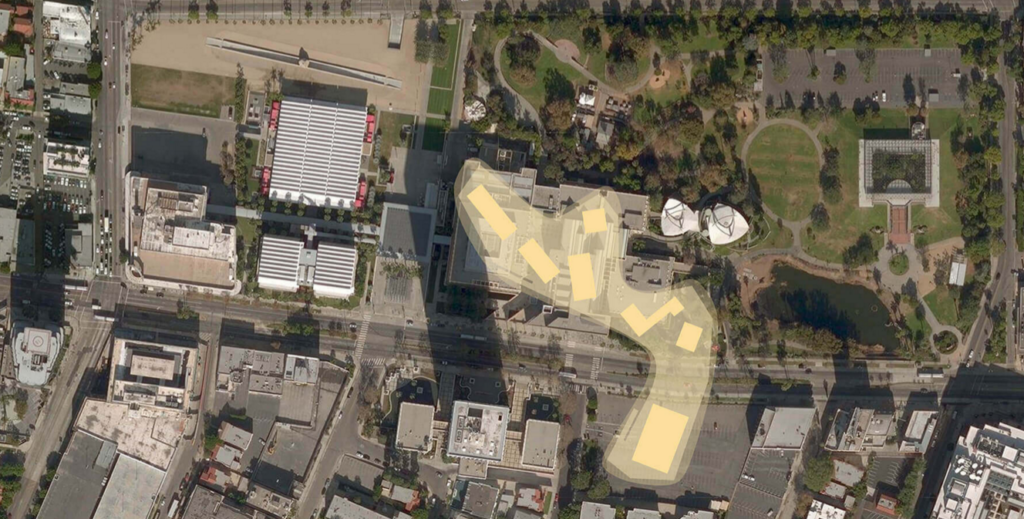
Building footprint spanning Wilshire Blvd. Atelier Peter Zumthor & Partner / Courtesy Building LACMA.
Nonetheless, he is open to collaboration with the museum and met with LACMA staff at the mid-Wilshire campus in June 2017. He arrived with plenty of ideas: galleries for community artists; special days on which community members can host their own events; workshops where established artists teach less-established artists how to financially negotiate the art world; 100 percent local employees (“They said they would be happy with 100 percent local hire, and you can quote me on that,” said Flo). He also asked LACMA how “they see themselves being held accountable” to South Central residents. They didn’t have a clear answer at the time, he said.
Even if the ambitions behind the satellite spaces are noble, it is hard to imagine the version of LACMA that currently exists—organizationally hierarchical and reliant on wealthy donors—opening up to embrace informal, grassroots energy. Joseph Giovannini, in his report for Los Angeles Magazine on the Board of Supervisors’ meeting, pointed out that some board members almost fawned over Govan and his famous supporters, including actors Diane Keaton and Brad Pitt. “They had joined the country club they were investigating,” he wrote. Board members then posed for photos with Govan and the celebrities, as over 100 people who had come to speak to the board about rent control and the city’s housing crisis waited patiently.
A responsible expansion into historically disenfranchised neighborhoods may require more vigilance and self-awareness than this—both on the part of city officials who will be tasked with approving budgets and leases, and on the part of museum officials reaching out to new, possibly wary populations. Will Flo, of South Central Arts, wrote a poem that he performed in front of the City Planning Commission and sent to Councilman Curren Price’s office (who never responded) and later recited for me. It ends: “But you need my hood’s approval, because if not we won’t forgive.”